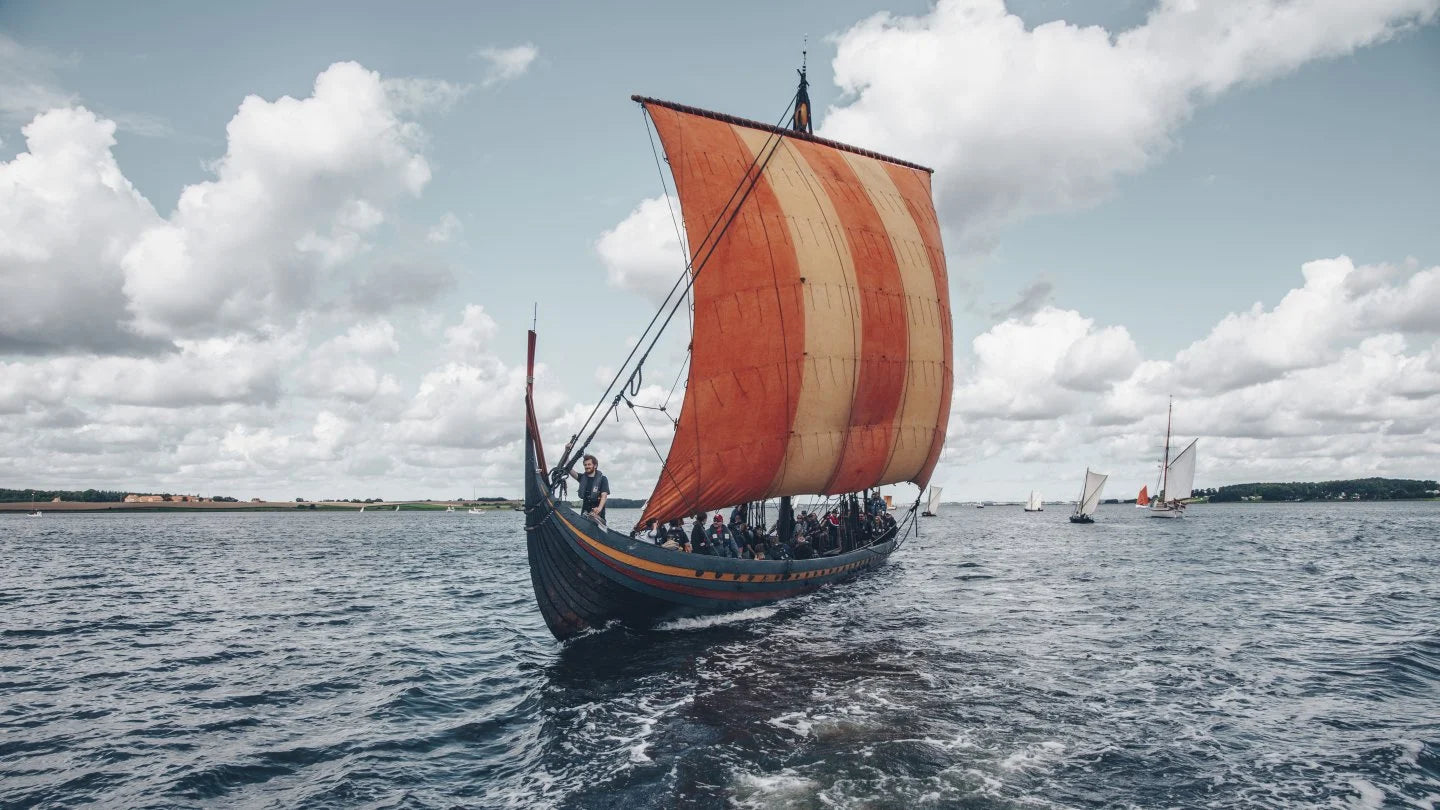The beautiful city of Dublin appears to have been founded twice by the Vikings. The first foundation was as a longphort (meaning enclosure or shore fortress) where the Scandinavians overwintered from 841AD onwards. This ended in 902 with the expulsion of the Norse settlers, mainly to the north of England. They returned in 917, and the settlement was re-established and developed into the city of Dublin.

Reconstruction of Dublin c. 1000 AD. The National Museum of Ireland.
It has been argued that it was during their time in the north of England that the Norse learned about urbanization, and it was they who brought it to Dublin in the early tenth century.
After the re-establishment of Dublin and its development into a wealthy town, control of the town became a necessity for any king seeking control over all of Ireland. In the eleventh century Dublin was a successful town with a population between 3,500 and 4,000, including men, women and children.
Extensive excavations carried out by the National Museum of Ireland between 1962 and 1981 revealed a wealth of evidence for the post-917 settlement. The single most important result of these excavations was the information they provided about town layout in the tenth and eleventh centuries. A series of fenced plots or tenements were unearthed and could be traced over a dozen successive building levels. Evidence of housings and a succession of waterfront buildings from between the tenth and thirteenth centuries were also found during further excavations.
The excavations in Dublin yielded evidence for a number of different building types. The typical Dublin house was a low walled, rectangular building with a doorway at either end. The main living area was a wide strip which ran between the doorways and between two raised side areas, which were often no more than raised seats or beds. A stone hearth was located in the middle of the floor area. Excavation also revealed evidence of town defenses in Dublin. The city was enclosed by an earthen bank in the tenth century, and a second larger bank was built around the settlement in the eleventh century.

Some of the most important finds relate directly – and unsurprisingly – to ship-building, clearly showing that ships were built in Dublin according to Scandinavian methods. There were found remains of ships themselves, sketches of ships on planks, model (or toy) ships in wood and lead fishing weights in the shape of ships.

Slate carving of Viking boat. The National Museum of Ireland.
While it can be difficult to determine whether the remains of a ship or boat found during an excavation was produced locally or if it originally came from abroad and only sunk in the location, many of the timbers found in Dublin suggest that these boats and ships were indeed produced locally, as these vessels were built mostly out of oak timbers obtained from within the Dublin region.
One of the most famous ships that can be traced to Dublin is the Skuldelev 2. This great Viking Longship, found wrecked in Roskilde (Denmark), was built from oak sourced from the Dublin region around the year 1042. This impressive ocean-going warship could hold a crew of between 65-70 warriors and was likely built for a great nobleman or king.
After three years of hard work the Viking Ship Museum in Roskilde, Denmark and the National Museum of Ireland reconstructed this ship, nicknamed The Sea Stallion from Glendalough. The ship could reach an average speed of 2.5 knots with only half the intended crew rowing. With its sail up, the ship could reach up to 12 knots.

The Sea Stallion from Glendalough (from the Roskilde Viking Ship museum)
By the early Viking Age the Norse were clearly enamored with the beautiful Dublin. They did not come only to spend the winter, but to stay. A group of researchers led by Dr. Rowan McLaughlin, from the School of Natural and Built Environment at Queen’s University Belfast (QUB) made a serious discovery back in 2019.
By examining the radiocarbon readings that were included on excavation reports from these archaeological sites and translated those readings into the level of activity during the early medieval Ireland period, Dr. Rowan McLaughlin found that Ireland’s population appears to have gone into an unexplained decline about 700AD. According to Dr. McLaughlin:
“Millions of people lived in Ireland during prehistory and the earliest Christian times. Around the year 700, this population in Ireland mysteriously entered a decline, perhaps because of war, famine, plague or political unrest. However, there was no single cause or one-off event, as the decline was a gradual process.” (...) “The Vikings settled in Ireland in the 10th century, during the phase of decline and despite being few in number, they were more successful than the ‘natives’ in expanding their population. Today, genetic evidence suggests many Irish people have some Viking blood. This large database has opened up a completely new perspective on the past that we simply could not obtain any other way.”
It seems that not even Vikings could resist the charms of Dublin!
Leave your comments below!
Sources:
Simek, Rudolf. 2007 (1993). Translated by Angela Hall. Dictionary of Northern Mythology. D.S. Brewer. ISBN 0-85991-513-1
Orchard, Andy. 1997. Dictionary of Norse Myth and Legend. Cassell. ISBN 0-304-34520-2
Howard Clarke. 2014. Tales of Medieval Dublin. ISBN-13: 978-1846824968
Thomas Fanning. 1994. Viking Age ringed pins from Dublin. ISBN-13: 978-1874045281
Seán McGrail, Medieval boat and ship timbers from Dublin (Dublin, 1993).
Mary Valante The Vikings in Ireland: settlement, trade and urbanization (Dublin, 2008).
Pat Wallace, 'The archaeological identity of the Hiberno-Norse town' in Journal of the Royal Society of Antiquaries of Ireland, vol. 122 (1992), pp 35-66.













Comment (1)
Hello! Are you certain the boat depicted on the incised slate is from the National Museum of Ireland? It is the same stone that was excavated from Jarlshof in Shetland, now at the National Museums Scotland. See https://www.nms.ac.uk/search-our-collections/collection-search-results?entry=161746.